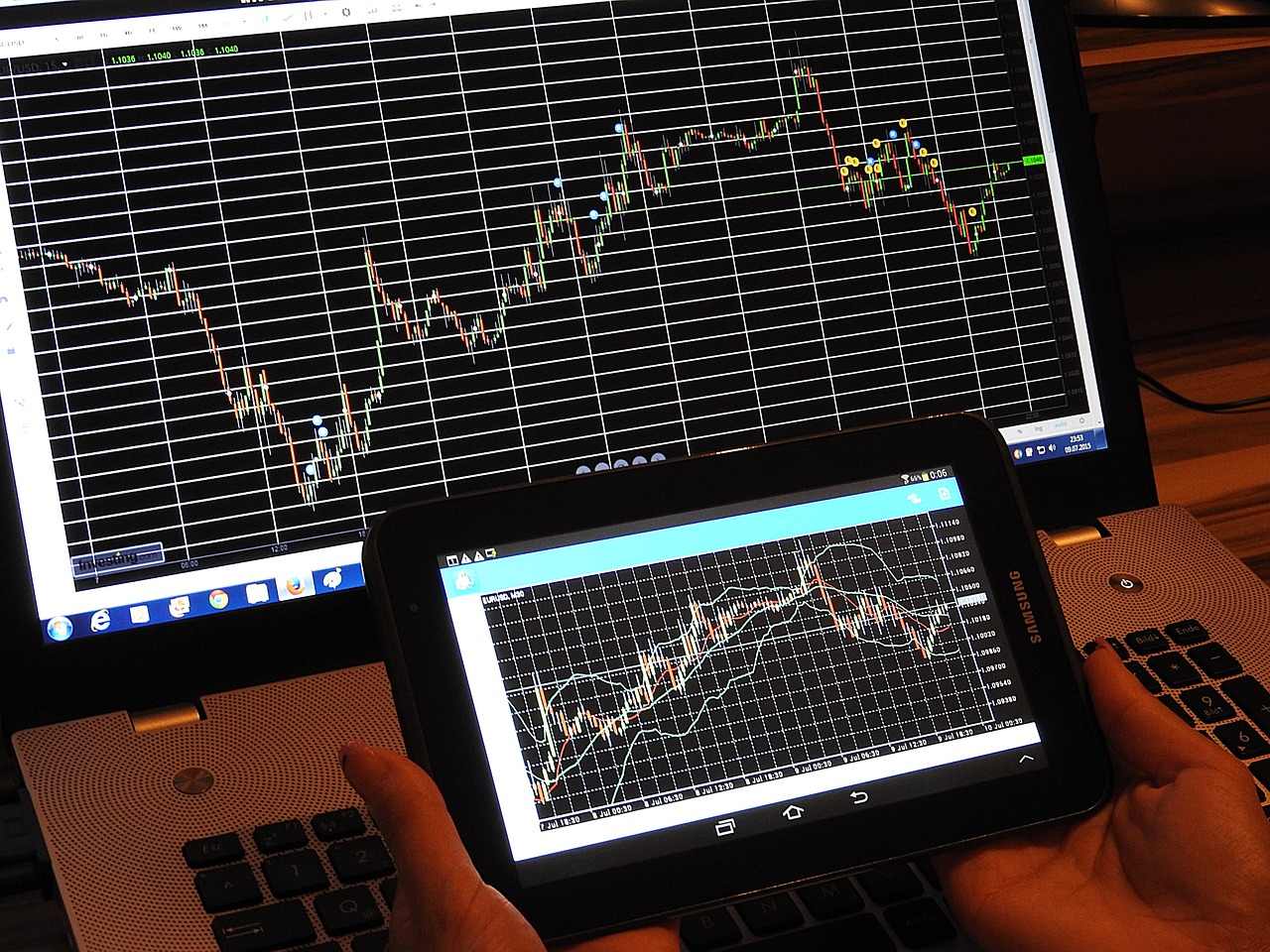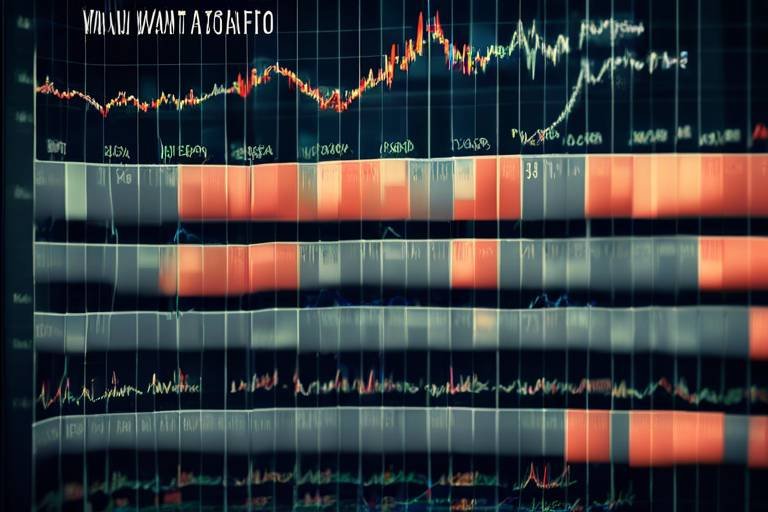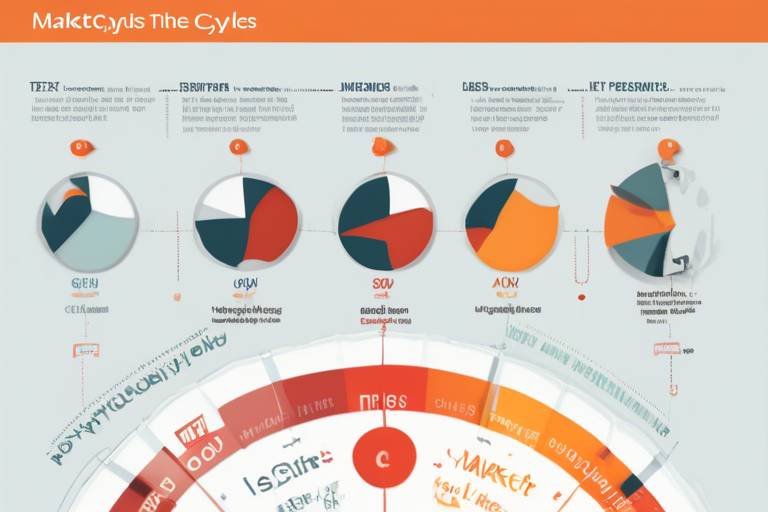How to Avoid Common Mistakes in Technical Analysis
Technical analysis is a powerful tool that traders use to forecast future price movements based on historical data. However, even the most seasoned traders can trip over common pitfalls that lead to misjudgments and missed opportunities. By understanding these mistakes and implementing strategies to avoid them, you can enhance your trading decisions and navigate the market with greater confidence. In this article, we'll delve into the prevalent pitfalls in technical analysis, offering insights and tips to ensure a more informed and successful approach to market analysis.
At its core, technical analysis involves evaluating price movements and trading volumes to predict future market behavior. Unlike fundamental analysis, which focuses on a company's financial health and economic conditions, technical analysis relies on charts and indicators to make trading decisions. This distinction is crucial, as it sets the foundation for recognizing common mistakes that can occur in the technical analysis realm.
When it comes to interpreting charts, many traders find themselves in murky waters. Misinterpretations can lead to poor decisions that could have been avoided with a bit more attention to detail. One major mistake is ignoring time frames, which can drastically skew analysis results. Choosing the right time frame is essential for aligning your strategy with market movements. Let's explore this further.
Every trader has their preferred time frame, but using an inappropriate one can lead to confusion and misinterpretation of data. For instance, short-term traders might focus on minute-by-minute data, while long-term investors may look at daily or weekly charts. Aligning your analysis with the correct time frame can significantly enhance your decision-making process.
Understanding the differences between short-term and long-term analysis is crucial. Short-term analysis often leads to quick trades, capitalizing on minor price fluctuations, while long-term analysis focuses on broader trends and patterns. Each approach has its own set of strategies, and recognizing which one suits your trading style can lead to better outcomes. For example, a short-term trader might look for quick gains, while a long-term investor might hold onto assets for several months or even years.
Using varying time frames inconsistently can create confusion and lead to poor decision-making. Imagine trying to navigate a city without a map; switching between different maps can only make the journey more complicated. Therefore, it’s essential to maintain consistency in your time frame selection. This consistency will enhance clarity and accuracy in your analysis, allowing you to make more informed decisions.
Indicators can be incredibly useful tools in technical analysis, but over-reliance on them can lead to mistakes. Traders often fall into the trap of believing that indicators alone can predict market movements. However, it's important to use indicators judiciously within a broader analytical framework. Combining indicators with other analytical tools and market context can provide a more comprehensive view of the market.
Another common mistake is neglecting the broader market context. Failing to consider external factors can lead to misguided decisions. For instance, economic events can dramatically affect market behavior, and being aware of these events is crucial for accurate technical analysis.
Economic indicators, such as unemployment rates and GDP growth, can have a significant impact on market movements. Integrating awareness of these events into your technical analysis can improve your accuracy. For example, if a major economic report is due, it may be wise to adjust your trading strategy accordingly.
Understanding market sentiment is vital for successful trading. Trader psychology can influence market movements significantly. Incorporating sentiment analysis into your strategy can provide valuable insights that traditional technical analysis may overlook. By gauging how other traders feel about the market, you can position yourself more effectively.
A well-structured trading plan is essential for avoiding mistakes. A solid plan will not only incorporate technical analysis principles but will also outline how to navigate the complexities of the market. Key components of an effective trading plan include setting clear entry and exit points and implementing risk management strategies.
Defining clear entry and exit points helps prevent emotional decision-making. It’s like having a map for your trading journey. Establishing these points based on technical analysis allows you to enter and exit trades with confidence, reducing the risk of impulsive decisions.
Effective risk management is crucial in trading. Various techniques, such as setting stop-loss orders and diversifying your portfolio, can protect your capital while utilizing technical analysis effectively. By implementing these strategies, you can safeguard your investments and enhance your overall trading experience.
- What is technical analysis? Technical analysis involves evaluating price movements and trading volumes to predict future market behavior.
- How can I avoid common mistakes in technical analysis? By understanding the common pitfalls, using appropriate time frames, and developing a solid trading plan.
- Why is market context important? Market context helps you understand external factors that can influence price movements, leading to more informed trading decisions.
- What role do indicators play in technical analysis? Indicators provide insights into market trends, but should be used as part of a broader analytical framework.

Understanding Technical Analysis
Technical analysis is a powerful tool that traders use to forecast future price movements in the financial markets. By analyzing historical price data, traders can identify patterns and trends that help them make informed decisions. Unlike fundamental analysis, which focuses on a company's financial health and economic indicators, technical analysis zeroes in on price action and volume. This approach allows traders to gauge market sentiment and identify potential trading opportunities.
At its core, technical analysis is based on the belief that all relevant information is already reflected in the price of an asset. This means that by studying price charts, traders can gain insights into market dynamics without needing to delve into the underlying fundamentals. For example, if a stock has been consistently rising for weeks, it may indicate strong market demand, and traders might look for opportunities to capitalize on that momentum.
However, understanding technical analysis goes beyond just reading charts. It involves recognizing key concepts such as support and resistance levels, trend lines, and various chart patterns. These elements play a crucial role in helping traders determine when to enter or exit a trade. Here are some fundamental aspects that every trader should consider:
- Support and Resistance: Support levels are price points where a stock tends to stop falling, while resistance levels are where it tends to stop rising. Identifying these can help traders make better decisions.
- Trends: Trends can be upward, downward, or sideways. Recognizing the direction of the trend is essential for aligning trades with the market's movement.
- Volume: Analyzing trading volume can provide insights into the strength of a price movement. High volume often indicates strong interest in a stock, while low volume might suggest a lack of conviction.
Understanding these concepts is vital for anyone looking to enhance their trading skills through technical analysis. However, it’s important to remember that this method is not foolproof. Mistakes can occur, especially when traders become overly reliant on charts without considering the broader market context. This is why recognizing common pitfalls in technical analysis is crucial for developing a successful trading strategy.
In summary, technical analysis is a significant aspect of trading that focuses on price movements and market trends rather than underlying fundamentals. By mastering the key components of technical analysis, traders can make more informed decisions and improve their chances of success in the markets. As we delve deeper into this article, we will explore common mistakes traders make in technical analysis and how to avoid them.

Common Pitfalls in Chart Interpretation
When it comes to technical analysis, chart interpretation is both an art and a science. However, many traders stumble into common pitfalls that can lead to misguided decisions. One of the biggest mistakes is misreading patterns. Charts are designed to convey information visually, but they can also be misleading if not analyzed properly. For instance, a trader might see a pattern that suggests a bullish trend when, in reality, the market is preparing for a bearish reversal. This misinterpretation can cause significant financial losses.
Another frequent error is failing to consider volume alongside price movements. Volume is like the heartbeat of the market; it gives context to price action. A price increase accompanied by low volume might not be as significant as it seems, while a price drop with high volume could indicate a strong trend reversal. Ignoring volume can lead to a false sense of security or panic, impacting trading decisions adversely.
Moreover, many traders fall into the trap of over-analyzing. With the plethora of indicators and data available, it’s easy to get lost in the noise. When traders bombard themselves with too many indicators or conflicting signals, they often end up confused rather than informed. A clear, focused approach is essential. For example, using just a couple of reliable indicators—like moving averages and RSI (Relative Strength Index)—can provide a clearer picture than a multitude of indicators that may contradict each other.
One crucial aspect that traders often overlook is the importance of context. Charts do not exist in a vacuum; they are influenced by various external factors, including market news, economic events, and trader sentiment. Failing to consider these factors can lead to significant mistakes. For instance, a trader might see a bullish pattern and decide to enter a trade, only to be blindsided by unexpected economic news that shifts market sentiment dramatically.
To help visualize these common pitfalls, here’s a quick overview:
| Common Pitfalls | Description |
|---|---|
| Misreading Patterns | Interpreting chart patterns incorrectly, leading to bad trading decisions. |
| Ignoring Volume | Not considering trading volume can give a skewed view of price movements. |
| Over-Analyzing | Using too many indicators can create confusion and lead to indecision. |
| Neglecting Context | Failing to consider external factors that influence market behavior. |
By being aware of these pitfalls, traders can improve their chart interpretation skills and make more informed decisions. Remember, successful trading is not just about crunching numbers and analyzing charts; it’s also about understanding the bigger picture and maintaining a clear, focused strategy.

Ignoring Time Frames
When it comes to technical analysis, one of the most significant mistakes traders make is . Time frames serve as the backbone of any analysis, providing context and clarity to price movements. Imagine trying to read a book but only glancing at random pages without understanding the storyline; that’s what ignoring time frames does to your trading strategy. Each time frame offers a different perspective, and failing to choose the right one can lead to misguided decisions that can cost you dearly.
Let’s break it down a bit. If you’re a day trader, focusing on short-term charts such as 1-minute or 5-minute intervals is crucial. However, if you’re looking at the same charts without considering the bigger picture, you might miss out on significant trends that are forming over days or weeks. Conversely, a long-term investor might be looking at daily or weekly charts, and if they suddenly switch to a 1-hour chart, they may get spooked by short-term volatility that doesn’t truly reflect the underlying asset's value.
So, how do you ensure you’re using the right time frames? Here are a few tips:
- Align Your Strategy: Tailor your time frames to fit your trading style. If you’re a swing trader, you might want to look at daily and 4-hour charts.
- Use Multiple Time Frame Analysis: This technique involves analyzing the same asset across different time frames to get a comprehensive view. For instance, if the daily chart shows an uptrend, check the 1-hour chart for potential entry points.
- Stay Consistent: Once you choose your time frame, stick to it. Jumping from one time frame to another can create confusion and lead to inconsistent decision-making.
To illustrate this point, let’s take a look at a simple table comparing different trading styles and their preferred time frames:
| Trading Style | Preferred Time Frame | Typical Holding Period |
|---|---|---|
| Day Trader | 1-Minute, 5-Minute | Minutes to Hours |
| Swing Trader | 4-Hour, Daily | Days to Weeks |
| Position Trader | Weekly, Monthly | Weeks to Months |
In conclusion, ignoring time frames can lead to a distorted view of market conditions and ultimately result in poor trading decisions. Always remember that time frames are not just numbers; they are vital tools that help you understand the market dynamics at play. By aligning your analysis with the appropriate time frames, you can enhance your trading decisions and navigate the markets with greater confidence.

Short-Term vs. Long-Term Analysis
When it comes to trading, understanding the distinction between short-term and long-term analysis is like knowing the difference between a sprint and a marathon. Each approach has its own unique strategies, benefits, and risks, and recognizing when to use which can be the key to your success in the market. Short-term analysis typically focuses on quick trades that capitalize on immediate market movements, often relying on minute-to-minute data and technical indicators. This can be exhilarating, but it also comes with its own set of challenges, such as the pressure to make rapid decisions and the risk of emotional trading.
On the flip side, long-term analysis takes a broader view, focusing on trends that develop over weeks, months, or even years. This approach allows traders to ride out short-term volatility and capitalize on larger market movements. However, it requires patience and a strong understanding of market fundamentals, as well as the ability to hold onto positions through periods of uncertainty. The key is to find a balance that works for you, as both strategies can be effective when implemented correctly.
To illustrate the differences further, let’s take a look at a comparison table:
| Aspect | Short-Term Analysis | Long-Term Analysis |
|---|---|---|
| Time Frame | Minutes to days | Weeks to months or years |
| Focus | Immediate price movements | Overall market trends |
| Trading Style | Active trading, day trading | Position trading, buy and hold |
| Emotional Impact | High, due to rapid decisions | Lower, as trades are held longer |
| Risk | Higher due to volatility | Generally lower, but requires patience |
Ultimately, the choice between short-term and long-term analysis should be guided by your personal trading goals, risk tolerance, and lifestyle. Are you someone who thrives under pressure, or do you prefer a more relaxed approach? By asking yourself these questions, you can better determine which strategy aligns with your trading style. Remember, there's no one-size-fits-all answer; the best traders often blend both approaches to create a well-rounded strategy that can adapt to changing market conditions.
In conclusion, whether you're a sprinter or a marathoner, the world of trading offers opportunities for everyone. By understanding the nuances of short-term and long-term analysis, you can make more informed decisions that align with your individual trading philosophy.

Inconsistent Time Frame Usage
One of the most common mistakes traders make in technical analysis is the inconsistent use of time frames. Imagine trying to solve a puzzle but using pieces from different sets; it just doesn’t fit together. Similarly, when traders jump between various time frames without a clear strategy, it leads to confusion and misinterpretation of market signals. This inconsistency can skew your analysis and create a distorted view of the market, ultimately leading to poor trading decisions.
When you analyze a stock or currency pair, it's essential to select a time frame that aligns with your trading goals. For instance, a day trader might focus on minute or hourly charts, while a swing trader may prefer daily or weekly charts. If a trader constantly switches between these time frames without a structured approach, they may miss crucial trends or signals. This inconsistency can cause them to enter or exit trades at the wrong moments, resulting in unnecessary losses.
To illustrate this point, consider the following example: If you are analyzing a stock on a 15-minute chart and then switch to a daily chart, you might see a bullish trend on the daily chart but fail to notice a short-term bearish signal on the 15-minute chart. This discrepancy can lead to a false sense of security, prompting you to make a trade that is not in your best interest. Therefore, it is vital to maintain a consistent approach to time frame selection.
To enhance clarity and accuracy in your analysis, consider the following strategies:
- Stick to a Primary Time Frame: Choose a primary time frame that aligns with your trading style and stick with it for the majority of your analysis.
- Use Multiple Time Frame Analysis: While it's essential to have a primary time frame, consider using higher and lower time frames to confirm trends without switching too frequently.
- Document Your Analysis: Keep a trading journal where you note the time frames you used and the rationale behind your choices. This will help you identify patterns and improve your decision-making process.
In summary, the key to avoiding mistakes related to inconsistent time frame usage is to establish a structured approach. By aligning your analysis with a consistent time frame and using multiple time frames judiciously, you can enhance your understanding of market dynamics and make more informed trading decisions. Remember, trading is like navigating a ship; you need a clear course to avoid getting lost in the waves of market noise.

Over-Reliance on Indicators
In the fast-paced world of trading, indicators serve as valuable tools that can help traders make informed decisions. However, the tendency to over-rely on these indicators can lead to significant pitfalls in technical analysis. Many traders fall into the trap of believing that indicators are foolproof, often ignoring the broader market context and other essential factors that contribute to price movements. This reliance can create a false sense of security, leading traders to make impulsive decisions based solely on indicator signals.
Imagine driving a car equipped with a GPS system. While the GPS provides directions, it doesn't account for real-time traffic conditions or road closures. Similarly, indicators can provide insights but may not reflect the current market dynamics. For instance, a trader might see a bullish signal from a moving average crossover and jump into a position without considering whether the overall market sentiment supports that move. This lack of comprehensive analysis can result in missed opportunities or, worse, significant losses.
To avoid the trap of over-reliance, it's essential to integrate indicators into a broader analytical framework. Here are some strategies to consider:
- Combine Indicators: Use multiple indicators to confirm signals rather than relying on a single one. For example, pairing a moving average with the Relative Strength Index (RSI) can provide a clearer picture of market momentum.
- Incorporate Price Action: Learn to read price action alongside indicators. Understanding how prices move in relation to support and resistance levels can enhance your trading decisions.
- Stay Informed: Keep abreast of market news and economic events that could impact your trades. This knowledge can help contextualize the signals provided by indicators.
Moreover, it's crucial to remember that indicators are based on historical data. They are designed to help identify trends and potential reversals, but they cannot predict the future with certainty. Traders should approach indicators with a healthy dose of skepticism and always question what the data is telling them. Are the indicators aligning with other analyses? What is the overall market sentiment? By asking these questions, traders can avoid the pitfalls of over-reliance and make more informed decisions.
In conclusion, while indicators can enhance your trading strategy, they should never be the sole basis for decision-making. By using them judiciously and in conjunction with other analytical tools, traders can navigate the complexities of the market with greater confidence and success.
- What are technical indicators? Technical indicators are mathematical calculations based on price, volume, or open interest that traders use to forecast future price movements.
- How many indicators should I use in my trading strategy? It's best to use a combination of 2-3 indicators that complement each other rather than relying on a single indicator to avoid confusion.
- Can indicators predict market movements accurately? No indicator can predict market movements with complete accuracy. They are tools that can help inform decisions but should be used alongside other analyses.

Neglecting Market Context
When diving into the world of technical analysis, one of the most significant oversights traders make is neglecting the broader market context. Picture this: you're staring at a chart, meticulously analyzing patterns and indicators, but you fail to consider what's happening in the world around you. This oversight can lead to misguided decisions that not only affect your trades but can also have a long-lasting impact on your trading career.
Understanding market context is like having a roadmap before embarking on a journey. Without it, you might find yourself lost in a maze of numbers and lines, making decisions based solely on technical signals. The reality is that market conditions are influenced by various factors, including economic events, geopolitical tensions, and even social trends. Ignoring these elements is akin to sailing a ship without checking the weather forecast; you might be headed for a storm without even knowing it!
To enhance your technical analysis, it’s essential to integrate an awareness of the market context. Here are a few key aspects to consider:
- Economic Events Impact: Major economic announcements, such as interest rate changes or employment reports, can dramatically affect market behavior. For instance, if you're analyzing a stock chart just before a significant earnings report, the volatility could skew your technical indicators, leading you to make hasty decisions.
- Market Sentiment Awareness: The psychology of traders plays a crucial role in market movements. Understanding whether the market is in a bullish or bearish sentiment can help you interpret technical signals more accurately. If everyone is feeling optimistic, a slight dip in price might just be a temporary pullback rather than a full-blown trend reversal.
Incorporating these factors into your analysis not only sharpens your insights but also prepares you for unexpected market shifts. For example, consider the following table that summarizes how different economic events can impact market behavior:
| Economic Event | Potential Market Impact |
|---|---|
| Interest Rate Changes | Can lead to significant fluctuations in stock prices, particularly in interest-sensitive sectors. |
| Employment Reports | Strong job growth can boost market confidence, while weak reports can trigger sell-offs. |
| Geopolitical Events | Uncertainty from geopolitical tensions can lead to increased volatility and risk aversion among traders. |
By keeping an eye on these elements, you can enhance your technical analysis and make more informed trading decisions. Remember, a well-rounded approach that considers both technical indicators and market context is your best bet for success in trading. So, the next time you’re analyzing a chart, take a moment to step back and ask yourself: What’s happening in the world that could affect this market? This simple question could save you from costly mistakes.
Q: What is market context in trading?
A: Market context refers to the broader economic, political, and social factors that can influence market behavior. It includes understanding current events, market sentiment, and economic indicators.
Q: Why is it important to consider market context when analyzing charts?
A: Ignoring market context can lead to misinterpretation of technical signals. Economic events and market sentiment can significantly affect price movements, making it crucial to incorporate these elements into your analysis.
Q: How can I improve my understanding of market context?
A: Stay informed by following financial news, economic calendars, and market analysis reports. Engaging with trading communities and forums can also provide insights into current market sentiment and events.

Economic Events Impact
When it comes to trading, understanding the impact of economic events is crucial for making informed decisions. Think of economic events as the weather forecast for the financial markets; just as you wouldn’t head out without checking if it’s going to rain, you shouldn’t make trading decisions without considering the potential influence of economic indicators. These events can range from employment reports to central bank announcements, and their effects can ripple through the markets, causing significant volatility.
For instance, a surprise change in interest rates by a central bank can lead to dramatic shifts in currency values, affecting not just forex traders but also those in equities and commodities. Traders who neglect these events may find themselves on the wrong side of a market move, leading to losses that could have been avoided with a little foresight. Therefore, integrating economic indicators into your technical analysis is not just beneficial; it's essential.
Here are some key economic events that traders should keep an eye on:
- Employment Reports: These reports provide insights into the job market and can influence consumer spending and overall economic health.
- GDP Releases: Gross Domestic Product (GDP) figures indicate the economic performance of a country and can lead to shifts in market sentiment.
- Inflation Data: Inflation rates can affect purchasing power and are closely watched by central banks when setting interest rates.
- Central Bank Meetings: Decisions made during these meetings can lead to immediate market reactions, especially if they differ from market expectations.
Incorporating awareness of these events into your trading strategy can enhance your technical analysis significantly. For example, if you know a major economic report is being released, you might choose to avoid entering new positions until after the report is out to prevent unexpected volatility from affecting your trades.
Moreover, it’s essential to not only be aware of these events but also to understand their potential implications. Consider how each event could influence market sentiment. For example, if unemployment rates are lower than expected, this could lead to increased consumer confidence, which might boost stock prices. Conversely, if inflation is rising faster than anticipated, it could prompt fears of interest rate hikes, leading to a sell-off in equities.
In summary, by integrating economic events into your technical analysis, you can better anticipate market movements and make more informed trading decisions. Remember, the market is not just a collection of charts and indicators; it's influenced by real-world events that can change the landscape in an instant. So, keep your ear to the ground and stay ahead of the curve!
Q1: How do I find out about upcoming economic events?
A1: You can find information on upcoming economic events through financial news websites, economic calendars, and trading platforms that offer market analysis.
Q2: Should I always avoid trading during major economic announcements?
A2: While it’s wise to be cautious, avoiding trading altogether isn’t necessary. Instead, consider adjusting your strategy to account for potential volatility during these times.
Q3: How can I incorporate economic events into my trading strategy?
A3: You can incorporate economic events by analyzing how past events have affected the market and adjusting your technical analysis accordingly. Keeping an economic calendar handy can help you plan your trades effectively.

Market Sentiment Awareness
Understanding market sentiment is crucial for any trader looking to navigate the often tumultuous waters of financial markets. Market sentiment refers to the overall attitude of investors toward a particular security or financial market. It’s like the pulse of the market; when you can feel it, you can make more informed decisions. But how do you tap into this sentiment? Well, it involves more than just looking at price charts or technical indicators. You need to consider the emotions and psychology that drive traders' actions.
One of the biggest mistakes traders make is ignoring the psychological factors that influence market movements. Just like a crowd at a concert, the market can behave irrationally at times. When fear grips the market, prices can plummet, even if the underlying fundamentals remain strong. Conversely, during periods of euphoria, prices can soar to unrealistic heights. Recognizing these emotional swings can give you an edge.
To effectively incorporate market sentiment into your trading strategy, consider these key elements:
- News and Social Media: Pay attention to financial news and social media platforms. They can provide real-time insights into market sentiment. A single tweet from a prominent figure can sway the market significantly.
- Sentiment Indicators: Utilize sentiment indicators like the Fear and Greed Index or Consumer Confidence Index. These tools can help you gauge whether the market is feeling bullish or bearish.
- Volume Analysis: Look at trading volumes. High volumes during price increases can indicate strong bullish sentiment, while high volumes during price declines can signal bearish sentiment.
By blending technical analysis with an understanding of market sentiment, you can develop a more holistic trading strategy. Think of it like cooking; you wouldn’t just throw ingredients into a pot without considering how they complement each other. Similarly, your technical analysis should be enhanced by sentiment insights to create a well-rounded approach.
Incorporating market sentiment into your trading decisions can help you avoid common pitfalls. For instance, if you notice overwhelming bullish sentiment but your technical indicators suggest a reversal is imminent, it may be wise to tread carefully. Conversely, if the sentiment is overwhelmingly negative, yet your analysis shows strong support levels, it could be an opportune moment to buy.
In summary, being aware of market sentiment is not just about following trends; it’s about understanding the human element behind those trends. By marrying technical analysis with sentiment analysis, you can elevate your trading strategy and make more informed decisions, ultimately leading to better outcomes.
Q: How can I measure market sentiment?
A: You can measure market sentiment through various tools such as sentiment indicators, social media analysis, and by observing trading volumes and news trends.
Q: Why is market sentiment important?
A: Market sentiment is important because it reflects the mood of the market participants, which can lead to price movements that are not always aligned with the fundamentals.
Q: Can market sentiment change quickly?
A: Yes, market sentiment can change rapidly, often due to news events, economic reports, or unexpected market developments. Staying informed is key.
Q: Should I rely solely on market sentiment for trading decisions?
A: No, while market sentiment is important, it should be used in conjunction with technical and fundamental analysis for a more comprehensive trading strategy.

Developing a Trading Plan
Creating a solid trading plan is like constructing a sturdy bridge; without a well-thought-out design, it’s bound to collapse under pressure. A trading plan serves as your roadmap, guiding you through the often turbulent waters of the financial markets. It’s essential to have a comprehensive strategy that not only outlines your trading goals but also incorporates the principles of technical analysis. This way, you can navigate the complexities of trading with confidence and clarity.
First and foremost, your trading plan should include clear objectives. What are you aiming to achieve? Are you looking for short-term gains, or are you more focused on long-term investments? Defining these goals will help you tailor your strategy accordingly. For instance, if you’re a day trader, your plan might emphasize quick, high-frequency trades, whereas a swing trader would focus on holding positions for several days or weeks.
Next, let’s talk about the importance of entry and exit points. Having a clear idea of when to enter and exit a trade is crucial to avoid emotional decision-making. You might want to consider using technical indicators, such as moving averages or support and resistance levels, to determine these points. For example, if you notice that a stock consistently bounces off a support level, that could be a signal to enter a trade. On the flip side, if it breaks through that level, it might be time to exit.
Moreover, a well-structured trading plan should include risk management strategies. Trading without a safety net is like walking a tightrope without a harness; it’s risky and can lead to significant losses. Implementing techniques such as setting stop-loss orders or defining the maximum percentage of your capital you are willing to risk on a single trade can help protect your investments. Here’s a quick table outlining some effective risk management strategies:
| Risk Management Strategy | Description |
|---|---|
| Stop-Loss Orders | Automatically sell a security when it reaches a certain price to limit losses. |
| Position Sizing | Determining the amount of capital to allocate to each trade based on risk tolerance. |
| Diversification | Spreading investments across various assets to reduce risk. |
Finally, it’s crucial to regularly review and adjust your trading plan. The market is constantly evolving, and what worked yesterday may not work today. By keeping an eye on your performance and making necessary adjustments, you can stay ahead of the game. Consider maintaining a trading journal where you document your trades, strategies, and outcomes. This will help you identify patterns and refine your approach over time.
In conclusion, developing a trading plan is not just a suggestion; it’s a necessity for anyone serious about trading. By setting clear objectives, defining entry and exit points, implementing risk management strategies, and regularly reviewing your plan, you can significantly enhance your trading performance. Remember, a well-prepared trader is a successful trader!
- What is the most important part of a trading plan? The most crucial aspect is having clear entry and exit points, along with effective risk management strategies.
- How often should I review my trading plan? It’s advisable to review your trading plan regularly, ideally after a set number of trades or at the end of each month.
- Can I trade without a trading plan? While it is possible to trade without a plan, it significantly increases the risk of making emotional decisions and incurring losses.

Setting Clear Entry and Exit Points
When it comes to trading, one of the most critical aspects that can make or break your success is the ability to set clear entry and exit points. Think of your trading strategy as a roadmap; without clearly defined destinations, you might find yourself lost in the chaotic world of market fluctuations. Establishing these points is not just about picking random prices; it involves a careful analysis of market conditions, price action, and your personal risk tolerance.
First and foremost, entry points should be based on a combination of technical indicators, chart patterns, and market sentiment. For instance, if you're looking to buy a stock, you might want to enter when the price breaks above a significant resistance level or when a bullish pattern, like a double bottom, forms. This way, you can increase your chances of entering at a price that positions you for potential gains. It's like waiting for the perfect wave to surf; you want to catch it just right!
On the flip side, setting exit points is equally important. You don’t want to be in a position where your emotions dictate when to sell. Instead, establish exit points based on realistic profit targets or stop-loss levels. For example, you could use a risk-reward ratio of 1:2, meaning for every dollar you risk, you aim to make two. This structured approach can help you maintain discipline and avoid the common pitfall of holding onto losing trades in hopes of a turnaround.
To make this clearer, let’s consider an example:
| Trade Type | Entry Point | Exit Point | Risk-Reward Ratio |
|---|---|---|---|
| Buy | $50 | $60 | 1:2 |
| Sell | $40 | $30 | 1:2 |
In this table, you can see that by setting clear entry and exit points, you have a visual representation of your trading plan. This not only helps in making informed decisions but also provides a framework to measure your performance over time. Remember, the goal is to minimize emotional decision-making and maximize your potential for success.
Lastly, it's essential to regularly review and adjust your entry and exit points based on changing market conditions. Just as a sailor adjusts their sails according to the wind, you too must be flexible and responsive to the market's ebb and flow. By doing so, you can enhance your trading strategy and increase your chances of achieving consistent profitability.
- What is the importance of setting entry and exit points?
Setting entry and exit points helps you manage your trades more effectively, reducing emotional decision-making and allowing for a structured approach to trading. - How do I determine my entry and exit points?
Entry and exit points can be determined through technical analysis, chart patterns, and by establishing risk-reward ratios that align with your trading strategy. - Can I adjust my entry and exit points after placing a trade?
Yes, it's important to be flexible and adjust your points based on market conditions, but ensure these adjustments are based on sound analysis rather than emotions.

Risk Management Strategies
When it comes to trading, the phrase "don't put all your eggs in one basket" couldn't be more fitting. Effective are crucial for safeguarding your investments and ensuring long-term success in the market. Without a solid plan, even the most skilled traders can find themselves facing significant losses. So, how do you create a robust risk management strategy? Let's dive into some key components that will help you protect your capital while navigating the often unpredictable waters of trading.
First and foremost, it's essential to establish a clear understanding of your risk tolerance. This refers to the amount of risk you are willing to take on in pursuit of your trading goals. Everyone has a different comfort level when it comes to risk, influenced by factors such as financial situation, experience, and personal temperament. By assessing your risk tolerance, you can determine the appropriate position sizes and stop-loss levels for your trades, ensuring you don't expose yourself to unnecessary risk.
Next, consider implementing a diversification strategy. Diversification involves spreading your investments across various assets or asset classes to reduce risk. Think of it as a safety net; when one investment dips, others may rise, balancing out your overall performance. Here are some effective ways to diversify your portfolio:
- Asset Class Diversification: Invest in different asset classes such as stocks, bonds, commodities, and real estate.
- Sector Diversification: Allocate funds to various sectors of the economy, like technology, healthcare, and finance.
- Geographic Diversification: Consider international investments to mitigate risks associated with local market fluctuations.
Another critical aspect of risk management is setting stop-loss orders. A stop-loss order is a predetermined price level at which you will exit a trade to limit potential losses. By using stop-loss orders, you can take emotion out of the equation and stick to your trading plan. For instance, if you buy a stock at $100 and set a stop-loss at $90, you are effectively capping your loss at 10%. This strategy not only protects your capital but also allows you to focus on other opportunities without constantly worrying about your current positions.
Additionally, it’s crucial to regularly review and adjust your risk management strategies as market conditions change. The financial landscape is dynamic, and what works today may not be effective tomorrow. By continuously monitoring your trades and the overall market environment, you can adapt your strategies to align with your evolving risk profile and market conditions.
Finally, consider employing a risk-to-reward ratio in your trading decisions. This involves analyzing the potential profit of a trade relative to the risk you are taking. A common guideline is to aim for a risk-to-reward ratio of at least 1:2, meaning for every dollar you risk, you should aim to make two dollars in profit. By adhering to this principle, you can ensure that even if you experience a few losses, your winning trades can more than compensate for them.
In conclusion, a well-structured risk management strategy is not just a safety net; it’s a fundamental component of successful trading. By understanding your risk tolerance, diversifying your investments, setting stop-loss orders, regularly reviewing your strategies, and maintaining a favorable risk-to-reward ratio, you can enhance your trading performance and protect your hard-earned capital.
Q: What is the most important aspect of risk management?
A: The most important aspect of risk management is understanding your own risk tolerance, which helps you determine how much risk you can afford to take on in your trading activities.
Q: How can I effectively diversify my portfolio?
A: You can diversify your portfolio by spreading your investments across different asset classes, sectors, and geographic regions to minimize risk.
Q: What is a stop-loss order and how does it work?
A: A stop-loss order is a predetermined price point at which you will exit a trade to limit potential losses. It helps take emotion out of trading decisions.
Q: Why is it essential to review my risk management strategies?
A: Regularly reviewing your risk management strategies allows you to adapt to changing market conditions and ensure that your approach remains effective over time.
Frequently Asked Questions
-
What is technical analysis?
Technical analysis is a method used to evaluate and predict the future price movements of a security based on historical price data and trading volume. Unlike fundamental analysis, which focuses on a company's financial health, technical analysis emphasizes chart patterns and market trends.
-
What are common mistakes in technical analysis?
Some common mistakes include misinterpreting charts, ignoring appropriate time frames, over-relying on indicators, and neglecting market context. These pitfalls can lead to poor trading decisions and missed opportunities.
-
How important are time frames in technical analysis?
Time frames are crucial in technical analysis as they dictate the perspective from which you view market movements. Using inconsistent or inappropriate time frames can skew your analysis, leading to confusion and potentially detrimental trading decisions.
-
Can I rely solely on indicators for trading decisions?
While indicators can provide valuable insights, relying solely on them can be misleading. It's essential to use indicators as part of a broader analytical framework that includes market context and sentiment to make more informed trading decisions.
-
Why is market context important in technical analysis?
Market context helps you understand the broader economic environment and trader sentiment, which can significantly influence price movements. Ignoring these factors may lead to misguided decisions and increased risk.
-
What components should be included in a trading plan?
A well-structured trading plan should include clear entry and exit points, risk management strategies, and guidelines for evaluating market conditions. This framework helps you stay disciplined and avoid emotional decision-making.
-
How can I set effective entry and exit points?
To set effective entry and exit points, analyze historical price levels, use support and resistance levels, and incorporate technical indicators. This approach helps you define clear strategies based on data rather than emotions.
-
What are some effective risk management strategies?
Effective risk management strategies include setting stop-loss orders, diversifying your portfolio, and only risking a small percentage of your capital on each trade. These techniques help protect your investments and minimize potential losses.



















